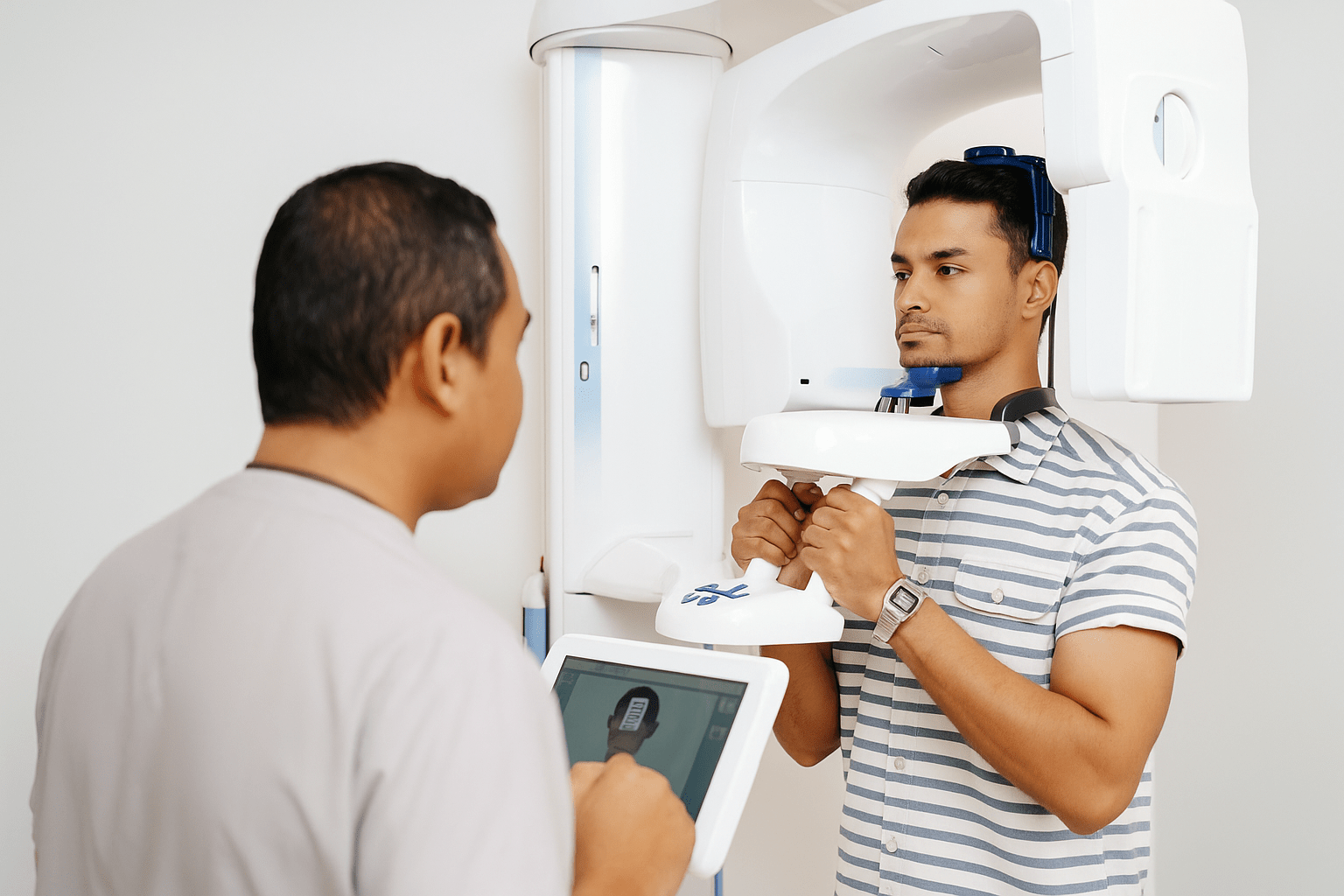
Why Your Dentist Needs to Take X-Rays
In the world of modern dental care, the use of X-rays is not just routine—it is a critical necessity to ensure your oral health is at its best. Many patients remain confused or concerned about the need for and safety of dental X-rays. Therefore, we aim to clarify why your dentist taking X-rays is an essential part of comprehensive dental care.
What Are Dental X-Rays?
Dental X-rays are a type of imaging technique that allows dentists to see the internal structures of the mouth, such as tooth roots, jawbones, and hidden areas that are not visible during a regular examination. With this technology, dentists can detect hidden problems before they become more severe or painful.
Why Visual Examination Alone Is Not Enough
A visual check-up only allows your dentist to see the outer surfaces of your teeth and gums. Dental issues like cavities between teeth, root damage, and bone loss are not visible without the help of X-rays. Imagine trying to diagnose a car engine problem just by looking at the hood—that’s the situation without X-rays in dentistry.
Common Types of Dental X-Rays Used in Clinics
1. Bitewing X-Rays
Used to detect cavities between teeth, monitor bone levels, and evaluate fillings.
2. Periapical X-Rays
Shows the entire tooth from crown to root and surrounding bone. Useful for detecting abscesses or root infections.
3. Panoramic X-Rays
Provides a full view of the entire upper and lower jaw. Used for orthodontic assessments, wisdom teeth, and TMJ disorders.
4. CBCT (Cone Beam Computed Tomography)
A more advanced 3D X-ray technology. Offers detailed views that are crucial for implant surgery, orthodontic planning, and complex cases.

Main Benefits of Dental X-Rays
1. Early Detection of Dental Problems
X-rays allow the dentist to identify minor issues like small cavities before they grow and cause pain—saving long-term treatment costs.
2. More Accurate Treatment Planning
Treatments like root canals, fillings, crowns, or bridges require internal structural information that can only be seen with X-rays.
3. Regular Monitoring of Oral Health
Patients undergoing gum disease treatment or orthodontic procedures require regular monitoring through X-rays to assess treatment effectiveness.
4. Safety in Surgical Procedures
Before procedures like wisdom tooth extraction or implant placement, X-rays help in surgical planning and reduce complications.
Are Dental X-Rays Safe?
Concerns about radiation safety are understandable. However, modern X-ray technology uses very low doses of radiation, even lower than natural daily environmental exposure.
Additionally, dental clinics use lead aprons to protect sensitive parts of the body. For pregnant women, dentists will assess the necessity before performing the procedure.
How Often Should You Get Dental X-Rays?
The frequency of X-rays depends on your age, medical history, current dental condition, and risk level. In general:
-
Children and teenagers may need X-rays more often due to tooth development.
-
Adults with no dental history issues might only need X-rays every 1–2 years.
-
Patients with gum disease or ongoing treatment may require X-rays more frequently for monitoring.
Your dentist will determine the need based on your individual risk—not as an automatic routine.
Common Myths About Dental X-Rays You Should Stop Believing
“X-Rays Are Dangerous”
Modern technology uses extremely minimal radiation, even lower than exposure during an airplane flight.
“I Don’t Feel Pain, So I Don’t Need X-Rays”
Not all dental problems cause pain in the early stages. X-rays help detect issues before they get worse.
“All Clinics Use the Same X-Rays”
Not true. More advanced clinics may use digital or CBCT technology, which are more precise and safer.
Conclusion: X-Rays Are an Investment in Your Dental Health
Don’t underestimate your dentist’s request to take X-rays. It’s not just a routine—it’s an essential step to prevent, detect, and treat dental problems effectively. With X-rays, your dentist can deliver care that is more accurate, safer, and cost-effective in the long run.
Take care of your teeth today, protect your smile for the future.








